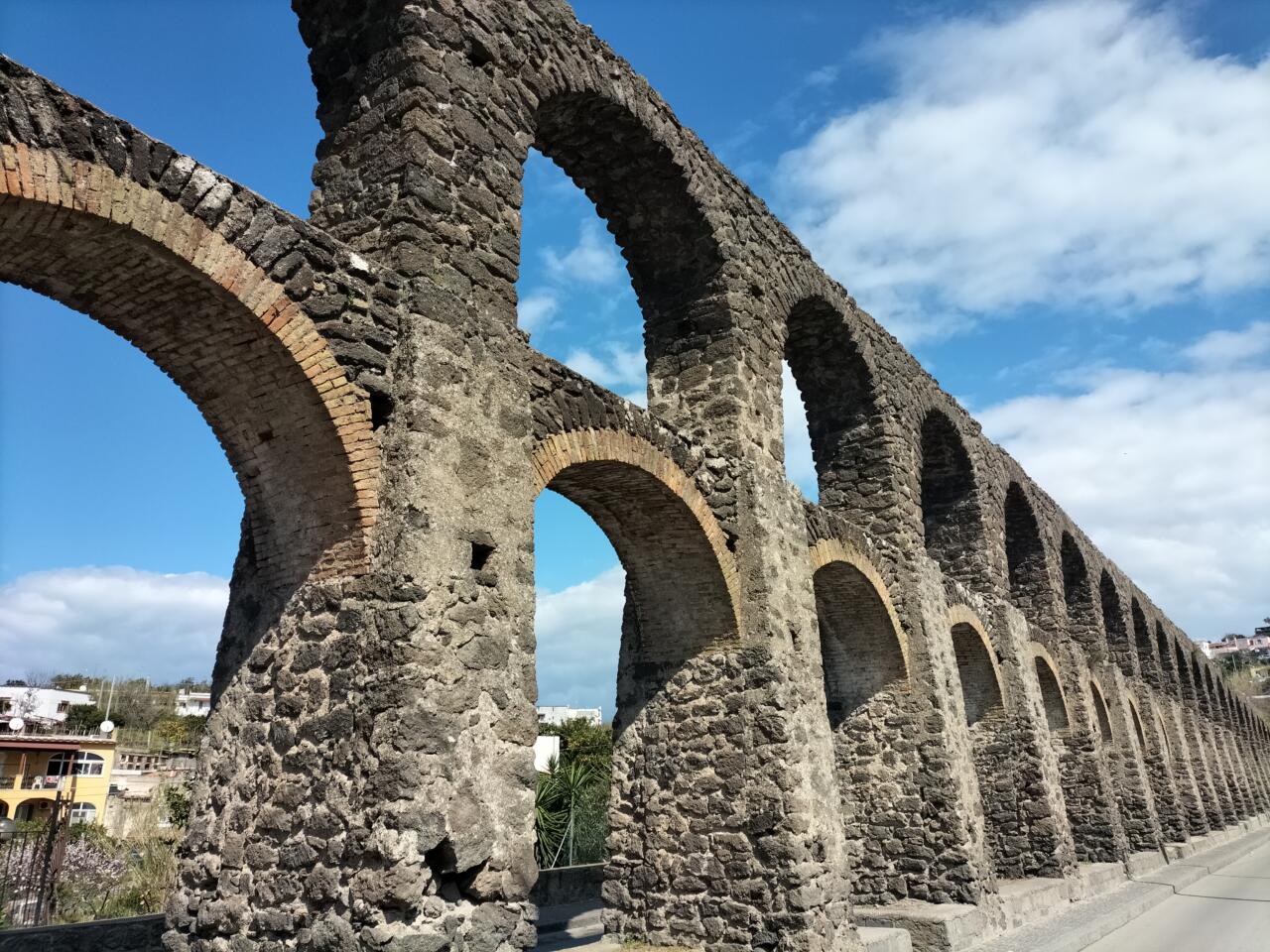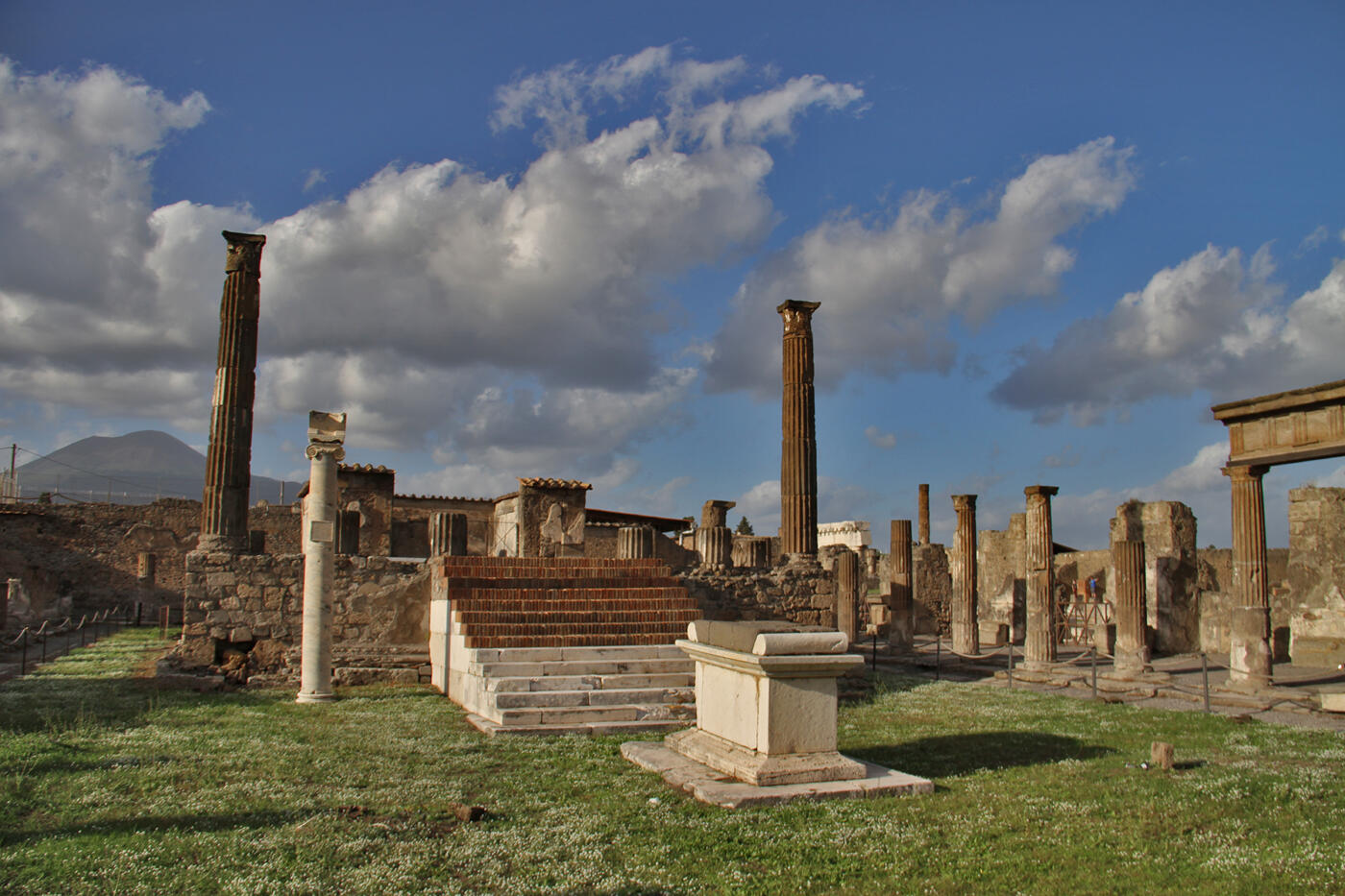
Exploring Campania, particularly the spectacular areas around the gulfs of Naples and Salerno, simply has to be a must-see destination for anyone planning a trip to Italy. Iconic places with names such as Naples, Capri, Ischia, Sorrento and the Amalfi Coast barely need an introduction. However, this itinerary also aims to reveal not only previously unseen places but also a different mode of travel for those who may have been here before, adding a cultural, charming and immersive aspect to your holiday by showcasing historical residences that it is possible to visit, and in many cases, also spend a night in. The natural place to start is in the centre of Naples, or more specifically Molo Beverello, the place where the ferries depart for the nearby islands. Ischia is the first destination at the top of our list.
Known as the ‘Isola Verde’ or ‘Green Island’ due to the colour of its local tuff stone, Ischia is in a league of its own, renowned as it is for its numerous thermal gardens, including Poseidon with its 22 pools, plus museums such as the Archaeological Museum of Pithecusae which houses important artifacts including the famous Cup of Nestor, the celebrated botanical garden La Mortella and the beautiful beaches. Another highlight is the Castello Aragonese, the iconic symbol of the island and our first historical residence. Located in Ischia Ponte and owned by the Mattera family, the property is open to the public all year round. Visitors can stay overnight, dine and host special events in its stunning spaces. The tour includes all the main areas of the Castle, including the notorious Nun’s Cemetery, where you will find out all about the strange burial practices and the harsh ordeals faced by the stoic nuns during their prayer time. Despite these sombre stories, the Castle’s beauty and the breath-taking views of the sea from its walls remain undiminished. Before leaving Ischia, don’t forget to sample its delicious signature dish at Trattoria Il Focolare in Barano d’Ischia. Recognised by the Slow Food Presidium, coniglio all’ischitana consists of rabbit browned in a traditional copper pan and then cooked in a terracotta pot. At the entrance to the restaurant, you will see photos of numerous celebrities who have enjoyed eating here, including Gérard Depardieu.

Either take the ferry directly back to Naples, or choose a shorter travel time by going to Pozzuoli. Time permitting, you could include a visit of nearby Procida, the fishermen’s island that was in the national spotlight in 2022 when it was named Italy’s Capital of Culture. After disembarking in Pozzuoli and before heading back to Naples, there is plenty to discover in this area known as the Phlegraean Fields. Highlights include the monuments of Pozzuoli (the Flavian Amphitheatre, the fourth largest in Italy; the Temple of Serapis, Lake Avernus, which Virgil referred to as the gateway to Hell in his Aeneid, and the Acropolis of Cumae, where the Cumaean Sibyl once lived), the charming town of Bacoli, the submerged city of Baiae, the Piscina Mirabilis and the picturesque Casina Vanvitelliana in the middle of Lake Fusaro. From Pozzuoli, take the Naples ring road past Capodichino Airport and head towards the hinterland to Caivano. Palazzo Capece, an old postal station that was acquired around 1800 by the Neapolitan Capece family, stands along the ancient Via Regia that connected Naples to the Royal Palace of Caserta. In addition to preserving the building, the family has also enhanced it with a collection of valuable historical and artistic items, largely thanks to the dedication of Pietro Capece. The Palazzo is currently undergoing renovation, but it still serves as an open-air museum, its highlight being the Gallery, where works of art of all kinds are exhibited, including over 500 African statues.
Heading back into Naples, we recommend you spend at least two days in the city, although even an entire week wouldn’t suffice to fully uncover and experience the myriad charms of this ancient Bourbon capital. A good part of such a week could be spent shopping for unique examples of Neapolitan artistry – don’t miss a trip to San Gregorio Armeno, for example, to buy one of the nativity figurines created by master craftsman Marco Ferrigno, who modernises some of the characters he portrays based on current trends (apparently the most popular figurine of 2024 is tennis player Jannik Sinner) – and enjoy local culinary delights such as pizza (Concettina ai Tre Santi in the Sanità district and Diego Vitagliano on Via Santa Lucia are the most popular at the moment, but there is an embarrassment of choices, and favoured venues change from year to year), fried food (La Padella in Vomero, Friggipizza in Fuorigrotta, Fiorenzano in the centre, to name but a few), and pastries (Poppella with its fiocco di neve or ‘snowflake’ cream cake covered in icing sugar, Attanasio for its crispy riccia sfogliatella and frolla tarts).

During your stay in Naples, you must also explore the underground city, the numerous monuments in the historic centre, the Cathedral and many other magnificent churches, Sansevero Chapel with the masterpiece sculpture by Giuseppe Sanmartino, the Veiled Christ, the Capodimonte Museum and the National Archaeological Museum, where the Secret Cabinet of erotic art contains artifacts found in Pompeii and Herculaneum. Since beauty is not merely relegated to the past, we also suggest you take the underground to admire some of the stations that have earned Naples the title of having the most dazzling metro system in the world, such as the one at Via Toledo designed by Catalan architect Óscar Tusquets Blanca.
A visit to Vesuvius, including a climb to the crater of this formidable volcano, is another essential experience in Naples: it is best to go early in the morning, when the pure air offers a view that will reveal all too clearly why the Gulf of Naples is considered one of the most extraordinary places in the world. Equally unmissable at the base of the mountain are of course the archaeological parks of Pompeii and Herculaneum, the two cities destroyed by Vesuvius in the 79 A.D. eruption. Be sure to include Villa de Cillis Carafa in nearby Torre del Greco, a charming historical residence on the slopes of Vesuvius which has a unique history. It was a cultural hub during the 19th and early 20th centuries and has now been converted into a guesthouse and venue for private events, providing accommodation in Classic, Deluxe and Suite rooms furnished with period pieces. It is strategically located for exploring Naples and its surroundings from the heart of the Vesuvius National Park. One such discovery is the Medieval Castle of Castellammare di Stabia, built by the Duke of Sorrento in the 9th century to protect the Sorrento Peninsula. The Castle is renowned for its monumental Renaissance staircase leading to a garden with fountains, water features and a fishpond, as well as a winter garden which has sea views and overlooks Vesuvius. The Castle is used for gala events, accommodating up to 500 guests. For those looking to base themselves in a convenient location for Sorrento and the Amalfi Coast, Masseria Astapiana Villa Giusso is absolutely ideal. This former Camaldolese monastery above the village of Vico Equense features six rooms with authentic antique furnishings and a small independent apartment, ideal for four people. Guests can enjoy products from the farm, which grows olives, raises cows and poultry, and maintains chestnut woods and ancient fruit trees across a significant portion of the property.

Traffic permitting, you will be beautifully well placed to easily reach key destinations on both the Sorrento and Amalfi sides from Villa Giusso, as it is located along the road which connects with Positano, just 15 km away. Besides Sorrento (from where boats depart for Capri, another essential excursion to discover the most magnificent island in existence), Positano and Amalfi, which are undoubtedly already on your ‘To Do’ list, don’t forget to call in on Ravello. Its churches and villas offer unrivalled panoramas of the coast (Villa Rufolo, Villa Cimbrone and the Terrace of Infinity), as well as featuring the Coral Museum, the Principessa di Piemonte Belvedere and the Church of San Giovanni del Toro. It is here on the incredible stage at Villa Rufolo that the annual Ravello Festival is hosted, which will celebrate its 72nd edition in 2024. As for gastronomic experiences along the Coast, you can enjoy a fine dining meal at Gennaro Esposito’s “Torre del Saracino” and the Iaccarino family’s “Don Alfonso 1890” in Massa Lubrense. For local cuisine, try the specialities in Cetara at the “San Pietro” or “Al Convento” restaurants in Piazza San Francesco. For pastries, the most notable address is Sal De Riso, a veritable culinary empire that originated in the establishment located on Via Roma in Minori, where Salvatore de Riso remains the proud leader of the pack to this day. After driving through Vietri sul Mare, a town that has a rich tradition in polychrome ceramics (remember to include a visit to the workshop of master craftsman Francesco Raimondi), you will begin to espy the port of Salerno, the ultimate stop of our journey. We would recommend you plan to stay overnight so that you can explore its historic centre (including the Cathedral of San Matteo and characteristic streets like the antique Via dei Mercanti), the Arechi Castle overlooking the city, its beautiful seafront and last but certainly not least, our final historical residence, Villa Wenner. Located just outside the city in Pellezzano, the Villa was formerly owned by the prominent Wenner textile family from the second half of the nineteenth century and has now been transformed by its new owners, the Scarpa family, to serve as accommodation and for the organisation of private events, including corporate events, birthday celebrations, conferences and receptions.